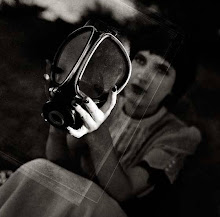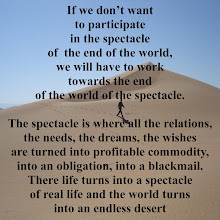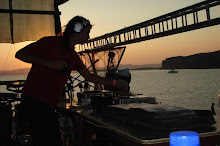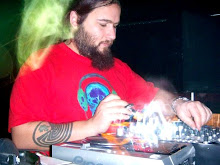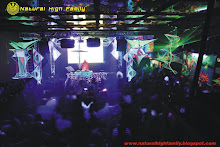skip to main |
skip to sidebar

 ΑΝΟΙΧΤΗ ΔΗΜΟΣΙΑ ΣΥΖΗΤΗΣΗΕΞΕΓΕΡΣΗ | ΚΙΝΗΜΑ |
ΑΝΟΙΧΤΗ ΔΗΜΟΣΙΑ ΣΥΖΗΤΗΣΗΕΞΕΓΕΡΣΗ | ΚΙΝΗΜΑ |
ΣΧΕΔΙΑ ΓΙΑ ΤΟ ΜΕΛΛΟΝ
ΚΑΤΑΛΗΨΕΙΣ – ΚΟΙΝΩΝΙΚΑ ΚΕΝΤΡΑ
ΚΑΤΑΣΤΑΣΕΙΣ ΣΤΟ ΔΗΜΟΣΙΟ ΧΩΡΟ
ΠΑΝΕΠΙΣΤΗΜΙΑΚΟ ΑΣΥΛΟ
ΕΦΗΜΕΡΕΣ ΑΥΤΟΝΟΜΕΣ ΖΩΝΕΣ
ΟΙΚΟΚΟΙΝΟΤΗΤΕΣ
ΡΙΖΟΣΠΑΣΤΙΚΟΣ ΥΠΟΚΕΙΜΕΝΙΣΜΟΣ
ΑΛΛΗΛΕΓΓΥΗ
Ελεύθερος Κοινωνικός Χώρος
NOSOTROS
Θεμιστοκλέους 66 / Εξάρχεια
Πέμπτη 5 Φεβρουαρίου 2009
έναρξη : 9μ.μ.ΚΑΛΕΣΜΑ:
ΑΠΟ ΤΗΝ ΕΞΕΓΕΡΣΗ ΣΤΟ ΚΙΝΗΜΑ
ΚΑΙ ΑΠΟ ΤΟ ΚΙΝΗΜΑ ΣΤΗΝ ΑΛΛΗ ΚΟΙΝΩΝΙΑ
Μια τραγική αφορμή. Ένας 15χρονος νεαρός νεκρός για το τίποτα από το όπλο αστυνομικού. Η οργή ξεχείλισε για το τελευταίο από τα δεκάδες «μεμονωμένα περιστατικά» ατιμώρητης και παράλογης Κρατικής Βίας.
Βία από ένα Κράτος-Τρομοκράτη που ξεφτιλίζει την αξιοπρέπεια της νεολαίας, των εργαζομένων, των μεταναστών σε καθημερινό επίπεδο μέσα από την ρατσιστική αστυνομοκρατία και τον κοινωνικό έλεγχο· Βία από τα Μέσα Μαζικής Εξαπάτησης και τα υπερ-καταναλωτικά τους πρότυπα· Βία από την επισφάλεια των εργασιακών σχέσεων και την εργοδοτική ασυδοσία· την κομματικοποίηση της πολιτικής, του εργασιακού και φοιτητικού συνδικαλισμού· Βία από την προκλητική χλιδάτη απληστία της Τραπεζικής Ελίτ και της Εκκλησίας· τους δασκάλους- μπάτσους του μυαλού και τα σχολεία φυλακές· Βία τα αναμορφωτήρια -ανθρώπινες κρεατομηχανές· Βία, η διάλυση των δομών δημόσιας δωρεάν Παιδείας, Συνταξιοδότησης και Υγείας· ο απάνθρωπος θεσμός της υποχρεωτικής στράτευσης, ο Στρατός και ο μισαλλόδοξος βαρβαρικός εθνικισμός.
Ένα σύστημα καταχρηστικό που προάγει την ανισότητα, την φτώχεια, την μαζική αποβλάκωση και τη βία. Και η συστημική βία γέννησε την κοινωνική βία και τη σύγκρουση, αλλά και τη πολύμορφη και δημιουργική αντίσταση, σε όλα τα μήκη και τα πλάτη της μικρής μας κοσμο-γωνίας. Μια εξέγερση που η έμπνευση και το φως της περιμένει να μεταλαμπαδευτεί σε όλη την «άλλη» Ευρώπη και τον υπόλοιπο κόσμο.
Ένα ξεκίνημα, μια εξέγερση, ένα Κίνημα υπό διαμόρφωση προσπαθεί να μετουσιώσει τα Αίτια σε συνολικά κοινωνικά Αιτήματα, σε σχέδια για μια άλλη Κοινωνία.
Εμείς, Τώρα, Εδώ και για Όλους Εμάς
Τα θέλουμε όλα
και για όλους
και πάνω από όλα
θέλουμε την Ελευθερία μας.
Απευθύνουμε ανοιχτό κάλεσμα σε όλη την οργισμένη και ανήσυχη νεολαία, μαθητές, φοιτητές, άεργους, άνεργους και εργαζομένους, παράνομους, νόμιμους και δεύτερης γενιάς μετανάστες, συλλογικότητες, ομάδες και μεμονωμένα άτομα, για να αναζητήσουμε από κοινού τα προτάγματα για την άλλη κοινωνία που διεκδικούμε και τους τρόπους δράσης για να φτάσουμε εκεί. Να συνδιαμορφώσουμε ένα σχέδιο δημιουργικών αντιστάσεων και προσωρινά αυτόνομων ζωνών που θα μετατρέψουν την οργή σε δημιουργία, την εξέγερση σε Κοινωνικό Κίνημα στο δρόμο για τη δικιά μας Ουτοπία.
Τα ερωτήματα που θέτουν μια μεθοδολογία στην αναζήτηση μας είναι:
* Ποια συγκεκριμένα προτάγματα και πολιτικές- κοινωνικές διεκδικήσεις αναδεικνύονται μέσα από την εξέγερση που ακολούθησε το θάνατο του Αλέξη Γρηγορόπουλου;
* Πως μπορεί το αυθόρμητο Κίνημα να συντονιστεί μέσα στην πολυμορφία του, στη Ελλάδα αλλά και δικτυακά με το εξωτερικό, για να μετατρέψει τη σύγκρουση σε δημιουργία μιας άλλης κοινωνίας;
* Ποιοι είναι οι στόχοι μας για το άμεσο μέλλον και πως τους εφαρμόζουμε ;
* Ποια τα σχέδια μας για την κοινωνία που οραματιζόμαστε και πως φτάνουμε εκεί;
Κενό Δίκτυο
(Θεωρία, Ουτοπία, Συναίσθηση, Εφήμερες Τέχνες)
http://voidnetwork.blogspot.com
Ηλιόσποροι
http://www.iliosporoi.net/
OPEN PUBLIC DIALOGUE
INSURRECTION | MOVEMENT
PLANS FOR THE FUTURE
SQUATS | SOCIAL CENTRES
SITUATIONS IN THE PUBLIC SPACE
UNIVERSITY ASYLUM |
ECO-COMMUNITIES |
RADICAL SUBJECTIVITY & SOLIDARITY
Free Social Space
NOSOTROS
Thursday 5 February 2008
Themistokleous 66 / Exarchia
Athens Greece
starts in 21.00Invitation:
From revolt
to the movement,
from the movement
to the "other" society
A tragic moment . 15 years boy dead for nothing from a police weapon. The anger melts for the last among many «isolated incidents» of state violence that remain unpunished.
Violence by a state-terrorist that humiliates the dignity of youth, of workers, of immigrants in a daily level through the racist police and the general social control...
Violence through the Media of Mass deception and the over-consumption trends...Violence that expands through the precariousness of labor relations, the irresponsibility and cynicism of the employers; the manipulative reformism of the political parties in the parliament, in the workplaces and in the student unionism, through the greed of provocative Banking Elite and the luxurious Church, through the work of mind-cop teachers and schools like prisons; through penitentiaries inhuman machines....The violence expands through the destruction of the public structures of retirement, free public education and free public health for the benefit of privitazation...The violence expands through the inhuman institution of compulsory military conscription, the Army and through the barbaric , intolerant nationalism.
An unfair system that promotes inequality, poverty, mass stupidity and violence.
The systemic violence created social conflict and public violence, but through the insurrection appeared the diverse and creative resistance all across our small society. An uprising that inspired and its light waiting to spread throughout the «other» Europe and the world.
A starting point, a rebellion, an emerging movement that is trying to translate the Causes into general social Requests, to make plans for another society.
We / Now / Here / and For All of Us
We want it All and For All
and above all we want our Freedom.
We make an open invitation to all angry and anxious youth, pupils, students, drop-outs, unemployed and workers, illegal, legal and second generation immigrants, collectives, groups and individuals, to seek together the ways to another society and calling for action to get there.
This is an invitation for planning together creative resistance and temporary autonomous zones that will transform anger into creation, the uprising in Social Movement, and the Movement in a way for our Utopia.
The methodological questions in our inquiry are:
* What specific political visions and social demands rised through the insurgency that followed the death of Alexis Grigoropoulos;
* How can the spontaneous movement coordinated in its own diversity, networked in Greece as also with foreign countries, and turn the conflict into the creation of a different society?
* What are our objectives for the near future and how we can apply them?
* What are our ways and plans for a different society and how we can reach there?
Void Network
(Theory, Utopia, Empathy, Ephemeral Arts)
http://voidnetwork.blogspot.com
Sunseeds / Iliosporoi
http://www.iliosporoi.net/









 FOR THE MEMORY
FOR THE MEMORY
OF ALEXIS GRIGOROPOYLOS
IN SOLIDARITY
TO ALL THE PRISONERS
OF DECEMBER 2008
SOCIAL INSURRECTION


Questions answered by
Void Network
(Theory, Utopia, Empathy, Ephemeral Arts);
posed by the CrimethInc. ex-Workers’ Collective
from U.S.A.
for the benefit of global underground resistance
http://www.crimethinc.com/blog/2008/12/25/how-to-organize-an-insurrection/ How were the actions coordinated within cities?
How about between cities?
There are hundreds of small, totally closed affinity groups—groups based in longstanding friendship and 100% trust—and some bigger groups like the people from the three big squats in Athens and three more in Thessaloniki. There are more than 50 social centers in Greece, and anarchist political spaces in all the universities of the country; also, the Antiauthoritarian Movement has sections in all major cities, and there is a network of affinity groups of the Black Bloc active in all Greek cities, based on personal relations and communicating via telephone and mail. For all of them, Indymedia is very important as a strategic point for collecting and sharing useful information—where conflicts are happening, where the police are, where secret police are making arrests, what is happening everywhere minute by minute; it is also useful on a political level, for publishing announcements and calls for demonstrations and actions. Of course, we can’t forget that in practice the primary form of coordination was from friend to friend through mobile phones; that was also the main approach used by young students for coordinating their initiatives, demonstrations, and direct actions.
What kinds of organizing structures appeared?
a.) All sorts of small companies of friends were making spontaneous decisions in the streets, planning actions and carrying them out themselves in a chaotic, uncontrollable manner: thousands of actions taking place at the same time everywhere around the country . . .
b.) Every afternoon there was a General Assembly in squatted schools, squatted public buildings, and squatted universities . . .
c.) Indymedia was used for announcements and strategic coordination of actions . . .
d.) The various communist parties also organized their own confederations of students . . e.) . . . And also, one especially influential federation was organized by the friends of Alexis, to organize the students’ demonstrations and actions, the squatting of schools, and to publish general announcements from the students’ struggle.
Were there any structures already in existence that people used to organize?
For the young students who were in the streets for the first time, and also for the immigrants who participated, the telephone was more than enough; this produced a totally chaotic and unpredictable element in the situations. On the other hand, for anarchists and anti-authoritarians, the General Assemblies are the organizing tool they have used for the last 30 years during any kind of movement. All affinity groups, squats, social centers, university occupations, and other organizations have their own assemblies, as well. Some other participants included left political organizations and left and anarchist university political spaces. During the fight, a lot of new blogs appeared, and new coordinating networks of high-school students.
What different kinds of people have participated in the actions?
The majority were anarchists, half of them older ones, some at high risk as they had previous charges for actions and would have to face custody if they were arrested. Beside them were thousands of school students 16-18 years old. Alongside these groups were immigrants, thousands of university students, many “gypsy” [Romani] kids taking revenge for social repression and racism, and old revolutionaries with previous experience from other social struggles.
 What different forms have the actions taken?
What different forms have the actions taken?
a.) Smashing, looting, and burning were the main actions that the young people used. They often attacked the expensive shopping districts, opened the fancy luxury shops, took everything from inside, and set fire to it in order to counteract the effects of the tear gas in the air. Many turned cars upside down to serve as barricades, keeping the police at a distance and thus creating liberated areas. The police used over 4600 tear gas bombs—nearly 4 tons—but people set countless fires, enough to maintain areas in which you could breathe despite this chemical warfare waged by the state against the people. When the thousands of people on the streets realized that the black smoke of the fires could cancel out the white smoke of the tear gas, they used the tactic of burning everything at hand as a protection from the tear gas. Other techniques included the smashing of the pavement with hammers, to produce thousands of stones for people to use as projectiles; and, of course, the personal initiative of producing and throwing molotov cocktails. This last tactic was used especially to force the riot police to fear and respect the demonstrators, and also as a way of controlling the space and time of attack and escape.
b.) Attacks with sticks, stones and molotov cocktails were carried out against countless banks, police stations, and police cars across the country. In smaller cities, the banks and the police were the primary or only targets, as the small-scale society and face-to-face relations discouraged the smashing of shops, with the exception of a few multinational corporate franchises.
c.) Hundreds of symbolic occupations were carried out in all kinds of public buildings, municipal offices, public service offices, theaters, radio stations, TV stations, and other buildings by groups of 50-70 people. Also, there were many symbolic acts of sabotage and blockading of streets, highways, offices, metro stations, public services, and so on, usually accompanied by the distribution of thousands and thousands of pamphlets to people in the area.
d.) Every day there were silent protests, art happenings, and non-violent actions in front of the parliament and in all cities. Most of them were brutally attacked by the police, who used tear gas and arrested people.
e.) Leftists organized concerts in public spaces with the participation of underground bands and also politically conscious pop stars. The biggest one in Athens involved more than 40 artists and drew over 10,000 people.
f.) Controlled student demonstrations were organized by the Communist Party. Many of these attracted much less participation than the chaotic spontaneous student demonstrations.



How many of the participants in the actions
have been involved in similar actions earlier?
For how many of them do you think this
is their “first time”?
Many thousands of people were experienced anarchist insurrectionists, anti-authoritarians, and libertarian autonomists; half of them were older anarchists who come into the streets only in very important struggles, as most of them have previous charges. There were also many thousands of young people who were radicalized over the last three years in the course of the social struggles for Social Insurance and against the privatization of education, and also in the huge spontaneous demonstrations that took place during the fires that burned almost 25% of the natural areas of Greece in the summer of 2007. We estimate that for about 30% of the people, this was their first rioting.
Which of the tactics used in the actions have
been used before in Greece? Did they spread in the course
of this rebellion? If they did, how did it happen?
Most of the tactics used in this struggle have been used for a long time now in Greece. The most important new characteristic of this struggle was the immediate appearance of actions all over the country. The assassination of a young boy in the most important area of anarchist activity provoked an instantaneous reaction; within five minutes of his death, anarchist cells all over the country had been activated. In some cases, the police were informed much later than the anarchists about the reason they were facing attacks from the people. For Greek society, it was a surprise that the majority of young people in the country adopted the tactics of “anarchist violence, smashing and burning,” but this was a result of the generalized influence that anarchists’ actions and ideas have had in Greek society over the past four years.
Have any conflicts emerged between participants in the actions?
The Communist Party separated itself from anarchists and leftists, and organized separate demonstrations. Also, the announcements that the Communist Party published, their appearances in the corporate media, their speeches to the parliament, and the negative propaganda that they carried on against all leftist organizations prove that they are a real enemy of any kind of efforts for social change.
What is the opinion of the “general public” about the actions?
What is called “general public” during a period of tele-democracy is something that needs a lot of discussion. Generally speaking, the “general public” feel fear when the TV says that we were “burning the poor people’s shops,” but the people know well what kind of shops exist in the expensive districts where the riots took place; they feel fear when the TV says that angry immigrants came out to the streets and looted, but also they know that the immigrants are poor and desperate, and also that it was only a minority of them that came to the streets. There were many artists, theoreticians, sociologists, and other such personages who offered explanations about the revolt, and many of them were beneficial for our causes; some were probably trapped by their need to participate in the spirit of the times, while others were using the situation as an opportunity to honestly express their real ideas. The “general public” is angry about the murder of a 15-year-old boy by a police officer, and they hate the police much more than before; anyway, nobody liked the police in the first place. The majority of “normal” people in Greece don’t trust the right wing government or the past (and probably future) socialist government, and they don’t like the police, expensive shops, or banks. Now a new public opinion is appearing that offers all the social and ethical justifications of revolt. If it was difficult to govern Greece before, now it will be much more difficult.
 How important to the context of these events
How important to the context of these events
is the legacy of the dictatorship in Greece?
How does it influence popular opinions and
actions in this case?
In 1973, the young people were the only ones who took the risk to revolt against the seven-year-running dictatorship; even if this was not the only cause of the end of dictatorship, it remains in the collective memory that the students saved Greece from the dictators and the domination of the US. It is a common belief that young people will put themselves at great risk for the benefit of all, and this produces a feeling of hope and a tolerance of the students’ actions. Of course, this story is now an old story and though it influences the background of the fights, it is not mentioned in reference to this conflict. Another influence comes from the student struggles of 1991 and 1995 against the privatization of education, which succeeded in changing the plans of the government and saved public education until today. Granted, the revolt of December 2008 was probably the apex of the anarchist movement in Greece until now, as it appeared all around the country and with a great deal of influence on the actions and slogans and ideas of a general part of the society; but the earlier student struggles, especially in Athens in 1991 were more visible and more generalized.
Do you think troubles in the economy are as important
in these events as the corporate media is saying?
The young people from the many rich areas of Athens also attacked the police stations of their areas, so even the class war Marxists have serious troubles to explain what is happening: the separation of the rich and poor doesn’t seem to matter as much as long-existing solidarity and participation in the fight for equality and social justice. On the other hand, Greeks between the ages of 25 and 35 cannot make families and have children, because of the economy. Greece is the most underpopulated society in all Europe. But we don’t talk about that here as the cause of the revolt. Young people are angry and they hate the police, capitalist cynicism, and the government in a natural, instinctual way that doesn’t need explanations or a political agenda. The local media tried not to speak in depth about social conditions here the way the English, French, or US media have. The local corporate TV stations attempt to pass off lies about chaotic “masketeers” with no ideas and no social identity, because the moral influence of anarchists is so strong now in this society that if they start to talk seriously about our ideas on television, society could explode. With the exception of some TV programs and newspapers, most of the mass media are trying to separate economic issues from the chaotic revolt. Even the leftists from the May ’68 generation, when they speak to the media, say that the smashing and the riots are not political expressions of the needs and the hopes of the people—that the anarchists and young people don’t have the ability to express a political agenda, and the people need other kinds of political representation. Of course, all this has little influence on the young people who will participate in the social struggles of the future, as after this struggle there exists high tension and a great distance between the younger people and any kind of political leadership or authority.
What other motivations, besides anger against
the police and the economy, do you think
are driving people to participate?
The personal and collective need for adventure; the need to participate in making history; the chaotic negation of any kind of politics, political parties, and “serious” political ideas; the cultural gap of hating any kind of TV star, sociologist, or expert who claims to analyze you as a social phenomenon, the need to exist and be heard as you are; the enthusiasm of fighting against the authorities and ridiculing the riot police, the power in your heart and the fire in your hands, the amazing experience of throwing molotovs and stones against the cops in front of the parliament, in the expensive shopping districts, or in your small silent town, in your village, in the square of your neighborhood. Other motivations include the collective feeling of planning an action with your best friends, making it come true, and later hearing people tell you about this action as an incredible story that they heard from someone else; the enthusiasm of reading about some action that you did with your friends in a newspaper or TV program from the other side of the planet; the feeling of responsibility that you have to create stories, actions, and plans that will become global examples for the future struggles. It is also the great celebrative fun of smashing the shops, taking the products and then burning them, seeing the false promises and dreams of capitalism burned in the streets; the hatred for all authorities, the need to take part in the collective ceremony of revenge for the death of a person that could have been you, the personal vendetta of feeling that the police have to pay for the death of Alexis across the whole country; the need to send a powerful message to the government that if police violence increases, we have the power to fight back and society will explode—the need to send a direct message to society that everyone has to wake up, and a message to the authorities that they have to take us seriously because we are everywhere and we are coming to change everything.
 Are political parties succeeding in co-opting energy
Are political parties succeeding in co-opting energy
from the uprising?
In “real” numbers, the Socialists have increased their lead over the right wing government, gaining an 8% lead in the polls; the “European Social Forum communists” lost 1% even though they helped the revolt, but still they are in third place with 12%; the Communist Party has 8%, the Nationalist neo-fascists 4.5%, and the Green Party is holding steady at 3.5%. It is also interesting that the leader of the Socialists appears now to be regarded as first in “capability to govern the country” after many years with much less popularity than the right wing prime minister. The riots had a great effect on the political scene: the political parties seemed unable to understand, explain, or react to the massive wave of violence and participation from every level of society. Their announcements were irrelevant to what was really happening. Their popularity decreased dramatically among the younger population, who don’t see themselves in the logic and the politics of the political parties and don’t feel represented by them.
What has been the role of anarchists in starting
and continuing the actions? How clearly is their
participation seen by the rest of society?
Over the past few years, anarchists have created a network of communities, groups, organizations, squats, and social centers in almost all the major cities in Greece. Many don’t like each other, as there exist many significant differences among the groups and individuals. This helps the movement, though, as the movement now can cover a great variety of subjects. Many different kinds of people find their comrades in different anarchist movements and, all together, push each other—in a positive, if antagonistic, way—to communicate with society. This communication includes creating neighborhood assemblies, participating in social struggles, and planning actions that have a meaning for the general society. After 30 years of anti-social anarchism, the anarchist movement in Greece today, with all its problems, limitations, and internal conflicts, has the capability to look outside of the anarchist microcosm and take actions that improve society at large in ways that are readily apparent. Of course, it will take a lot of effort for this to be obvious, but day by day nobody can deny it. As for the role of anarchists in starting and continuing the actions . . . especially at the beginning—Saturday and Sunday, December 6 and 7—and also in the continuation after Wednesday, December 10, the anarchists were the vast majority of those who carried out the actions. In the middle days, especially on Monday when the destructive Armageddon took place, students and immigrants played a very important role. But the vast majority of students found it easy to feel satisfied after one, two, or three days of smashing, and then went home or attended demonstrations with a more pacifist atmosphere. Likewise, immigrants had to face a very strong backlash from locals, and they were afraid to return to the streets. So the 20,000 anarchists in Greece started it, and continued it when everybody else returned to normality. And we have to mention that the fear of returning to normality helped us to keep up the fight for ten days more, putting ourselves into great danger as acts of vengeance for the assassination of our comrade transformed, in our fantasies, into preparations for a general strike. Now European society knows once and for all what a social insurrection looks like, and that it is not difficult to change the world in some months. But you need all the people to participate and play their roles. The young people of Greece sent an invitation to all the societies throughout Europe. We are awaiting their responses now.
How much visibility do anarchists have in Greece in general?
How “seriously” is anarchism taken by the majority of Greek people?
In a way, you can say that it is just three or four years now since anarchists started to take themselves “seriously” so we are seen that way in the broader society. It is only in the past few years that we have succeeded in expanding beyond the limitations of the anti-police strategy that had characterized our efforts for 25 years. According to that strategy, we attack the police, they arrest people, and we do solidarity actions, over and over again. It took us 25 years to escape from this routine. Of course, the anti-police attacks and fights continue, and the prisoner solidarity movement is stronger than ever, but the anti-social element inside the anarchist movement is under conscious self-control and we can speak, care, and act for the benefit of the whole society now, using actions and plans that can be comprehended much more clearly by at least a part of the society. Many actions, like the attacks on supermarkets and the free distribution of stolen products to the people, became very popular and well-accepted. The attacks on banks, especially now following the economic crisis, are well-accepted also, and the attacks on police stations have been adapted and utilized by high-school students around the country. In one way or another, we have been the first subject in the news for the last 15 days. Generally speaking, with our participation in students’ or workers’ struggles and also in ecological struggles, every week some action taken by anarchists attracts attention and offers visibility to the anarchist movement. This doesn’t mean that “anarchism” is taken seriously by the majority of Greek people, as most people still believe the lies of television that describe us as “masketeers” and criminals, and also the majority don’t have any idea about how an anarchist society could ever function—that includes most of the anarchists, also, who refuse to address this question! But our actions, critiques, and ideas have strong influence now on left and progressive people. It’s not possible anymore to say that we don’t exist, and now our existence radicalizes the majority of the younger generation.
What role have subcultural groups—
like punk, squatting, and so on—played in making the uprising possible?
After ’93 we had a strong tendency in the Greek anarchist movement—accompanied by many serious internal fights—that eliminated the influence of “subcultural” styles inside the movement. This means that there is no punk, rock, metal or whatever anarchist identity in the Greek anarchist movement—you can be whatever you like, you can listen to whatever music you like, you can have whatever style or fashion you like, but that is not a political identity. In the street fights this month, many “emos” participated, together with hippy freaks and ravers, many punks, heavy metal boys and girls, and also trendy, normal kids and students that like Greek music or whatever. It has to be social and political consciousness, social critiques and collective understandings that bring you to participate in the anarchist movements, not fashion. Of course, for at least the last 19 years the Void Network and similar collectives have played the role of offering a cultural introduction to radical political spaces. Such groups organize many cultural/political events, festivals, and parties every year and have the power to attract thousands and thousands of people to underground cultures. But even Void Network doesn’t create subcultural identities, doesn’t separate the different subcultures, and tries to organize events that include most of the underground cultures. It’s true, though, that the majority of the people in the scene attend and participate in most of the events of the d.i.y. underground culture; many events are organized every month in liberated spaces.
What things have made the anarchist movement healthy in Greece?
The separation from subcultural identity politics made people understand that to call yourself an anarchist it takes much more serious participation, planning, creativity, and action than just wearing a t-shirt with the antichrist on it and walking around in punk concerts drinking beer and taking hypnotic pills. Now there is an understanding that to call yourself an anarchist you have to come to demonstrations, to come out into the streets with banners and black or red-and-black flags, shouting slogans together and manifesting an anarchist presence. Also, that you should participate every week in one, two, or three different assemblies with people for one, or two, or three different preparations of different actions, plans, or struggles to call yourself an anarchist. You have to be friends with people you trust 100% to plan anything dangerous, you have to be aware and informed about anything that is happening in this world to decide what the proper course of action is, you have to be crazy and enthusiastic, to feel that you can do incredible things—you have to be ready to give your life, your time, your years in a struggle that will never end. It is healthy not to have expectations, because then you don’t get disappointed. You don’t expect to win. You are used to appearing, fighting, and then disappearing again; you know how to become invisible as a person and visible as collective power; you know that you are not the center of the universe, but that any time you can become the center of your society.
 In what ways do you think the anarchist movement
In what ways do you think the anarchist movement
in Greece could be better or stronger?
We need to find more intelligent ways of explaining our ideas to people. We need techniques of political communication with all of society, better and stronger ways to make the “political translation” of our actions and put the whole struggle in its social context. In a tele-democracy, where the politicians are nothing more than television superstars, our refusal to communicate with or through the mass media is healthy, but we need to find new ways to overcome the mass media “consensus reality,” the media propaganda against us, and find ways to explain the causes of our actions to society. As long as whatever the TV shows “exists” and whatever doesn’t appear on TV “doesn’t exist,” we will be there with our crazy ideas, the dangerous actions and the street fights to break the normality of the TV program, we will use the negative advertisement of our actions to kidnap the fantasies and dreams of the common people. But how can we explain our positive ideas to everyone? How can we help people cease to trust the media? How can we come into contact with millions and millions of people? It will take millions and millions of posters and free pamphlets, traveling hand by hand in the streets; it will take millions of invitations for demonstrations and participation in social struggles; it will take more free public services in sections that the government don’t want or cannot cover—free anarchist doctors and teachers, free food, free accommodation, information, underground culture, and so on—that can bring people closer to our ideas. It will also take more and more squats and social centers. If you can start a squat, that is better, but even if it’s not possible to squat in your town, rent a building with your friends, take care of the bureaucracy, make a collective, start an assembly, and put the black or red-and-black flag in the entrance. Start offering the people of your city a living example of a world without racism, patriarchy, or homophobia, a place of equality, freedom, and respect for differences, a world with love and sharing. We need more “Autonomia” in the insurrectionism of the Greek anarchist movement, to make it shine as a paradigm of a new wave of social life and demonstrate this novel survival methodology in the metropolis.
How effective has police repression been
in shutting down the anarchist movement?
How have people resisted it?
The dreams and plans of the insurrectionists came true: a huge wave of participation “overpassed” the anarchists, and for many chaotic days people traveled and fought in the city like never before, in an unfamiliar time and space of existence. In the same days, of course, they came face to face with the limitations of insurrection. The people now spend many hours in long discussions about how to expand popular understanding and invent practices, actions, and methods that will sustain and enrich the struggle. Many people think about ways that will bring really close all the different elements of this revolt. The police repression didn’t play a more important role in the conclusion of the riots than physical fatigue did. All of us share a feeling of completion and a feeling of beginning, and these are feelings that the police can not touch.
What do you think the final result of the events
of December will be?
Ongoing struggle! A never-ending fight for political, social, and economic equality! Constant expansion of freedom! In the future, neoliberal governments in Greece and throughout Europe will think very seriously before attempting to implement any kind of economic or social change. The riots in Athens and the economic crisis ended the cynicism of the authorities, banks, and corporations, radicalized a new generation in Greece, and gave our society a chance to open a dialogue about the massive social struggles of the future. As the slogan of December 2008 in Athens and Exarchia goes:
WE ARE AN IMAGE FROM THE FUTURE.
Questions answered by
Void Network
(Theory, Utopia, Empathy, Ephemeral Arts);
posed by the CrimethInc. ex-Workers’ Collective
http://www.crimethinc.com/blog/2008/12/25/how-to-organize-an-insurrection/
Appendix I:
Links to the Blogs of the Occupied Universities -
This is the blog of Polytechnic University that was in the center of the riots, 200 meters from the area where Alexis was assassinated. Here you can find links for most of the squats and initiatives that were organized in schools, universities, and many public buildings during the revolt in all country.
-Though most of it is in Greek,
this is the blog from the squatted Athens School of Economics, which accommodated hundreds of different anarchist, autonomist, libertarian, utopian and antiauthoritarian movements, actions, and groups. It is located 500 meters away from Polytechnic School in the center of Athens.
-Again, most of it is in Greek, but this is the blog from the first ever occupation of the building of the General Federation of Greek Workers, a syndicalist institution that has functioned as an obstacle to workers’ struggles for the past 90 years. The building is located between the Economics University and the Polytechnic School.
-Though it seems that it wasn’t used as much for political work and the sharing of ideas as the other blogs, this is the blog of the squatted University of Law in Athens, the main center of the Anti-Authoritarian Movement and many other leftist groups.
Appendix II:
Important Squats in Greece
There are countless other buildings, social centers and projects in Greece—these are just a few.
In Athens:
Villa Amalias - http://villa-amalias.blogspot.com/ (since 1990)
Lela Karagianni - http://www.geocities.com/lelas_k/index.htm (since 1988)
Farm Prapopoulos - http://protovouliaxalandriou.blogspot.com/ (since 2006)
. . . and also we have to mention Nosotros
- http://www.nosotros.gr/ (Free Social Space) in Exarchia,
even though that social center is not a squat but a rented building.
In Thessaloniki:
Fabrika Yfanet
- http://fiveprime.org/hivemind/Tags/yfanet (since 2004)
Terra Incognita
- http://www.flickr.com/photos/20222375@N07/2280591376 (since 2005)
Delta squat -
http://delta.blogs.squat.gr/ (since 2007)
 This is an announcement from Void Network about the inssurection of December 2008 in Greece that includes the invitation to the people to expand the social, cultural and political activism in 2009 with thousands of initiatives, actions and situations [unfortunately the text is in Greek but a translation is under construction]
This is an announcement from Void Network about the inssurection of December 2008 in Greece that includes the invitation to the people to expand the social, cultural and political activism in 2009 with thousands of initiatives, actions and situations [unfortunately the text is in Greek but a translation is under construction]
ΔΕΝ ΕΙΝΑΙ ΠΑΡΑ ΤΩΡΑ!
(Περί των γεγονότων του Δεκεμβρίου 2008 και τον ερχομό του 2009.)
Είναι πράγματι πρωτοφανή για τα δεδομένα των τελευταίων ετων τα γεγονότα στα οποία γίναμε μάρτυρες το Δεκέμβρη του 2008. Δεν είναι μόνο ο παλμός μιάς πραγματικής κοινωνικής εξέγερσης που έχει αγκαλιάσει μεγάλα κομμάτια του πληθυσμού και κυρίως της νεολαίας, αλλά και το εύρος με το οποίο έχει απλωθεί αυτή η ατμόσφαιρα, το οποίο έχει φέρει σε πολύ δύσκολη θέση τους μηχανισμούς διαχείρισης της εξουσίας τόσο πανελλαδικά,όσο και πανευρωπαικά! Το ντόμινο των κοινωνικών εκρήξεων που μπορεί να προκαλέσει η ανεξέλεγκτη κατάσταση σε αυτό το κομμάτι της ευρωπαικής ένωσης, έχει φέρει τις εικόνες των πυρπολημένων ελληνικών δρόμων στις πρώτες θέσεις τόσο των πανευρωπαικών media όσο και στο φαντασιακό ενός έτοιμου να ξεσπάσει περιθωριοποιημένου δυτικού πληθυσμού ο οποίος καθημερινά βιάζεται στην μέγγενη της ελεγχόμενης συνείδησης, της κατανάλωσης, και της μισθωτής δουλείας . Ένα από τα εξαιρετικά χαρακτηριστικά που διαφοροποιούν αυτή την εξέγερση, που είχε σαν έναυσμα της τον απρόκλητο βίαιο θάνατο του δεκαπεντάχρονου Αλέξη Γρηγορόπουλου στα Εξάρχεια από τη σφαίρα ενός αστυνομικού, είναι πως έχει ξεπεράσει κατά πολύ τον κάθε επίδοξο χειραγωγό της, όσο και τις ιδεολογίες ενός σημαντικού κομματιού των ακτιβιστών οι οποίοι έχουν βρεθεί στον πυρήνα αυτών των γεγονότων! Θα μπορούσε να πεί κανείς πως δεν υπάρχουν και πολλά πιό υπέροχα πράγματα μέσα στο καθημερινό μύθευμα που διάγουν οι ζωές μας, από την οντολογική εμπειρία της υπέρβασης των ίδιων των ιδεών μας μέσα από την ένωση συνειδητού και ασυνείδητου πάθους σε μια ενιαία ευφυώς χαοτική συνιστώσα! Παρόλα αυτά δεν πρέπει να κλείνουμε τα μάτια και σε κάποια σημεία τα οποία εύκολα, μπορούν να παρερμηνευθούν στην άγρια έκσταση του φαντασιακού που πλέον βγαίνει ανοικτά προς τα έξω.
Ένα από αυτά είναι αναμφίβολα πως χρειάζεται η μέγιστη δυνατή διαύγεια στην διαρκή ανάλυση των εξελίξεων σημείο-σημείο. Δεν πρέπει να αγνοήται η παρουσία ολόκληρων επιτελείων που τόσο στα ανώτερα κλιμάκια της κοινωνίας του ελέγχου, όσο και στα κλειστά (όταν αυτά δεν ανοίγουν από καταλήψεις) γραφεία των Μ.Μ.Ε, νυχθημερόν εργάζονται πάνω στην ψυχολογική χειραγώγηση της οδεύουσας πέρα από την σύγχυση του καναπέ κοινωνίας- αυτής της κοινωνίας των «νοικοκυραίων» θα μπορούσε να πεί κάποιος- , η οποία ναι μέν έχει δείξει κάποια υγιή αντανακλαστικά, αλλά που την ύπνωση και την αποκοίμιση της, ξανά, έχουν σαν καθημερινό στόχο τα εν λόγω επιτελεία, χρησιμοποιώντας κάθε είδους σημειακό και ψυχολογικό τέχνασμα. Ποιο ρόλο πιστεύετε πώς παίζουν στο ασυνείδητο του έτοιμου πρός κατανάλωση εικόνων θεατή, οι εικόνες με τους μετανάστες οι οποίοι εισβάλουν στις διαλυμμένες βιτρίνες των «Μαγαζιών μας», η σημαία της «Πατρίδας μας» η οποία φλέγεται σε κάποιο καλυμμένο από οδόφραγματα δρόμο ή οι συνεχείς αναφορές στο αντιεξουσιαστικό κομμάτι των διαμαρτυριών ώς «Κουκουλοφόρους», οι οποίοι εσχάτως έφτασαν και σε έναν αριθμό εξακοσίων(!) από εκατόν πενήντα(!!) που ήταν μέχρι πρότινος( Χωρίς φυσικά να γίνεται ουσιαστική αναφορά πως φυσικά ΔΕΝ ΕΙΝΑΙ ΔΥΝΑΤΟΝ εξακόσιοι άνθρωποι να πυροδοτούν ταραχές από τα μεγάλα μητροπολιτικά κέντρα της χώρας μέχρι περιοχές που έως τώρα γνωρίζαμε μόνον σαν επαρχιακούς σταθμούς τραίνων(!!!), άρα μιλάμε για ένα ΠΑΡΑ ΠΟΛΥ ΜΑΖΙΚΟΤΕΡΟ ΦΑΙΝΟΜΕΝΟ!). Αυτή η επιχείρηση είναι σε εξέλιξη ακόμα και αυτήν την στιγμή θέλοντας να ενεργοποιήσει τον λουφαγμένο μικροαστισμό της ελληνικής κοινωνίας ενάντια στο νέο πνεύμα που γεννιέται μέσα από τις στάχτες του Δεκέμβρη. Ένα δεύτερο χαρακτηριστικό που πρέπει να λάβει της δέουσας προσοχής , είναι η πρωτοφανής διπλή γλώσσα από την πλευρά τόσο της καταραίουσας κυβέρνησης, όσο και των υπόλοιπων κρατικών μηχανισμών. Ήταν μόλις χθές όταν το δικαστικό σώμα σκανδαλωδώς έριχνε στα «μαλακά» και άφηνε με αστείες ποινές ,ΕΛΕΥΘΕΡΟΥΣ(!!!) τους τραμπούκους αστυνομικούς της υπόθεσης της ζαρντινιέρας, ή που μόλις σήμερα εμφάνισε ένα πρώτο βούλευμα εξοστρακισμού(!!!) της σφαίρας του στυγνού δολοφόνου του Αλέξη Γεωργόπουλου. Όλα αυτά δεν συναινούν παρά σε μια ελεγχόμενη προσπάθεια από τη μιά να παραχθεί ένα θέαμα "συγκλονισμένων", πολιτικών, αστών και μεγαλοδημοσιογράφων, από την αστυνομία η οποία εξέθρεψε έναν δήθεν παρανοϊκό ειδικό φρουρό, και από την άλλη, υπογείως, να δημιουργηθεί ένα κλίμα επιπλέον έντασης μέσα από κάθε είδους πρόκληση, η οποία θα οδηγήσει τελικά (όπως ελπίζουν!) οι θύτες και οι ηθικοί αυτουργοί να εμφανιστούν ως οι προστάτες και οι επίδοξοι τιμητές μιας κοινωνίας που οι ίδιοι έμμεσα και άμεσα δολοφόνησαν στο πρόσωπο ενός παιδιού την περίφημη πλέον νύχτα του Δεκεμβρίου 2008. Όλα αυτά πρέπει να διατηρούν το κίνημα σε μία κατάσταση διαρκούς επιφυλακής και μέγιστης διαύγειας, έτσι ώστε να μπορεί να παίρνει αποφάσεις και να σχεδιάζει τακτικές και στρατηγικές, πέρα από τους συναισθηματικούς εγκλωβισμούς και το τυφλό μίσος. Οι διαρκείς δράσεις,οι αναξέλεγκτες συγκρούσεις, οι εκτροπές των σημείων της πόλης, οι οδοί που αλλάζουν όνομα, οι αστικές περιοχές που αλλάζουν ατμόσφαιρα, τα παγωμένα κτήρια που καταλαμβάνονται και αποκτούν ζωή μέσα από τις συνελεύσεις των ανθρώπων τους, τα ποδήλατα στη μέση της Πανεπιστημίου την ώρα που συμβαίνει μιά σύγκρουση, ο δυναμιτισμός της σύγχησης και της θολούρας της επίσημης Παρα-πληροφόρησης με εκατοντάδες κείμενα και χιλιάδες αφίσσες παντού σε όλη την χώρα, το διαδίκτυο και η δημιουργία πολλών καινούργιων, πολύμορφων και διαφορετικών σελίδων και blogs, οι αυτοπεριφρουρούμενες εκδηλώσεις της αντι/κουλτούρας στα πανεπηστήμια, τις πλατείες και τους δρόμους, τα ανεξάρτητα φεστιβάλ, τα rave party και οι συναυλίες αλλυλεγγύης, οι διαρκείς, καθημερινές ακτιβιστικές δράσεις, οργανωμένες από φίλους και συντρόφους που καταφέρνουν να ξεπερνούν τα ατομικά στεγανά και να συναντιούνται για να συζητήσουν και να ετοιμάσουν δράσεις σαν αυτή στο The Mall, στα εκδοτήρια εισητηρίων του Μετρο ή την δράση γελοιοποίησης ενός επίσημου δελτίου ειδήσεων έτοιμου να σπείρει κατασκευασμένες «Αλήθειες», η κάθε είδους ενέργεια που στην καρδία της έχει την αγάπη, την ισότητα και την ελευθερία όσο ακραία ή παράξενη και εάν φαίνεται, αν καταφέρουν οι δρώντες να δράσουν σε ένα φόντο που συμπεριλαβάνει την υπόλοιπη κοινωνία και επεκτείνετε προς αυτήν, έχει την δύναμη να σπάσει τα σκοτεινά παρασκήνια και την διαστροφή των πληροφοριών και των συνειδήσεων που επιχειρήται. Είναι δυστύχημα οτι όλη αυτή η κοινωνική έκρηξη, χρειάστηκε το αίμα ενός δεκαπεντάχρονου παιδιού για να εκφραστεί, ενώ θα έπρεπε ίσως το γυαλί της ΝΥΧΤΑΣ ΤΟΥ ΘΕΑΜΑΤΟΣ, της αποχαύνωσης και της ύπνωσης που παράγει η ΑΓΝΟΙΑ στις μεταμοντέρνες κοινωνίες, να έχει σπάσει ΠΟΛΥ ΠΙΟ ΠΡΙΝ! Πόσοι πιο λίγοι είχαν δραστηριοποιηθεί μέσα στους συγκαλυμμένους εξοστρακισμούς, τις πτώσεις από γέφυρες(!), τους θανάτους από τροχαία(!) κατά τη διάρκεια διαμαρτυριών, τα καθημερινά εργατικά και εργασιακά εγκλήματα, τις καταστροφές των δασών στο βωμό των αναπτυξιακών προγραμμάτων, των οικοπεδοφάγων και των καζίνων, ή στις απροκάλυπτες δολοφονίες από ατύχημα(!!!) μεταναστών Αλβανών, Ρώσων, Αφρικανών και φυσικά παιδιών ενός κατώτερου Θεού, όπως θεωρούνται από τους ελληνικούς ρατσιστικούς κρατικούς μηχανισμούς οι Τσιγγάνοι! Όμως καθώς ξυπνάμε ώς κοινωνία σιγά-σιγά μέσα στο όνειρο μας, και ψάχνουμε την χαμένη ανάγκη για φροντίδα και όχι για κακομεταχείριση ή φόνο του ΑΛΛΟΥ, πλέον οι ίδιοι πρέπει να αντιτάξουμε με προσήλωση τον πλούτο των εκδηλώσεων που μόνο οι καρδιά και το διευρυμένο φαντασιακό μας μπορεί να αφήσει ελεύθερα να υλοποιηθούν γύρω μας. Ας βρεθούμε τώρα δίπλα-δίπλα όπου η ανάγκη ενός νέου κόσμου το επιτάσσει και ας μην αφήσουμε κανέναν να μας κλέψει τις στιγμές που βρεθήκαμε ΜΑΖΙ απέναντι στην επέλαση της βαρβαρότητας και της Ελεγκτικής βίας. Οι ίδιοι να διαδηλώσουμε και να συναντηθούμε ΤΩΡΑ ΞΑΝΑ ΚΑΙ ΞΑΝΑ με τα δεκατετράχρονα και τα δεκαπεντάχρονα παιδιά, που ήδη αυτή την στιγμή πέρα από κάθε είδους αγκύλωση έχουν κοιτάξει το σάπιο πρόσωπο του φτιασιδωμένου μοντέλου αυτού του κόσμου κάτω από το πέπλο, και έχουν περάσει σε ένα απρόβλεπτο αύριο! Ένα αύριο που δεν είναι παρά το αιώνιο ΤΩΡΑ της ελευθερίας!...
Κενο Δικτυο (Θεωρία, Ουτοπία, Συναίσθηση, Εφήμερες Τέχνες)





























![VOID MIRROR [theory, info, global movement news]](https://blogger.googleusercontent.com/img/b/R29vZ2xl/AVvXsEiaLvlWRUHJgycn3xI3d8kfRy7JwD48VBDrUl4osdfXHWblUYSZrv_kakq0n4EYTxCnB4tBlqW3F3tCE7gdirCT2h7mjA2beX6e1tn4Sc5EFXsCxV1deIOXpLuwgjsv0Kn_ZURwlQ/s220/CeluBkCWQAAFgxB.jpg)

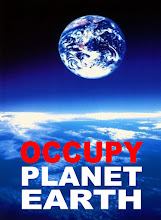










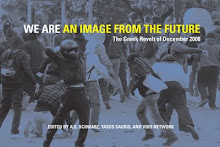


![READ TEXT ONLINE: WE ARE AN IMAGE FROM THE FUTURE [THE GREEK REVOLT OF DECEMBER 2008 ]](https://blogger.googleusercontent.com/img/b/R29vZ2xl/AVvXsEiSh9LwgbFVtp1LmXgtGFBHJd6XMGn7D1zhacFhu1rKb-ILRy-vEo9bDOQcqA3AMYp6grDF0h3lAZHW7HIPmPU-THY1GOBDE4NLSh_8amqgL7AnNLemp0tFOeKe6emqrfJk-1hPUw/s220/510T1GQ26KL._BO2%252C204%252C203%252C200_PIsitb-sticker-arrow-click%252CTopRight%252C35%252C-76_AA300_SH20_OU01_.jpg)





![THESES ON DRUGS [GREEK LANGUAGE]](https://blogger.googleusercontent.com/img/b/R29vZ2xl/AVvXsEiXbps2DJgHZ7MbN1LbTE9wlP-wedJMrC7UgMKj9u_WiSqzE7AGqKK_MDpdo8uCncOr1M_ij29TOenU19hiZtaaVytO4HrSAykfPr-TXsnXO6mfjCALzB10X27jPRFOydxBKUlk8g/s220/%25CE%2596%25CE%2597%25CE%25A4%25CE%2597%25CE%259C%25CE%2591+%25CE%25A4%25CE%25A9%25CE%259D+%25CE%259D%25CE%2591%25CE%25A1%25CE%259A%25CE%25A9%25CE%25A4%25CE%2599%25CE%259A%25CE%25A9%25CE%259D.jpg)






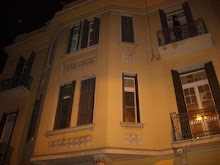

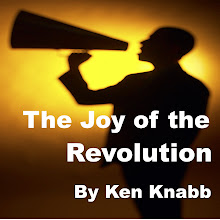




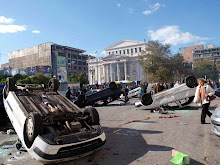
![GLOBAL EYE [LONDON section of VOID NETWORK]](http://1.bp.blogspot.com/_vSyk6SJoF1M/Sfr7KhauTxI/AAAAAAAACmM/nCtI6Kzenbg/S220/global+eye+photo.jpg)





